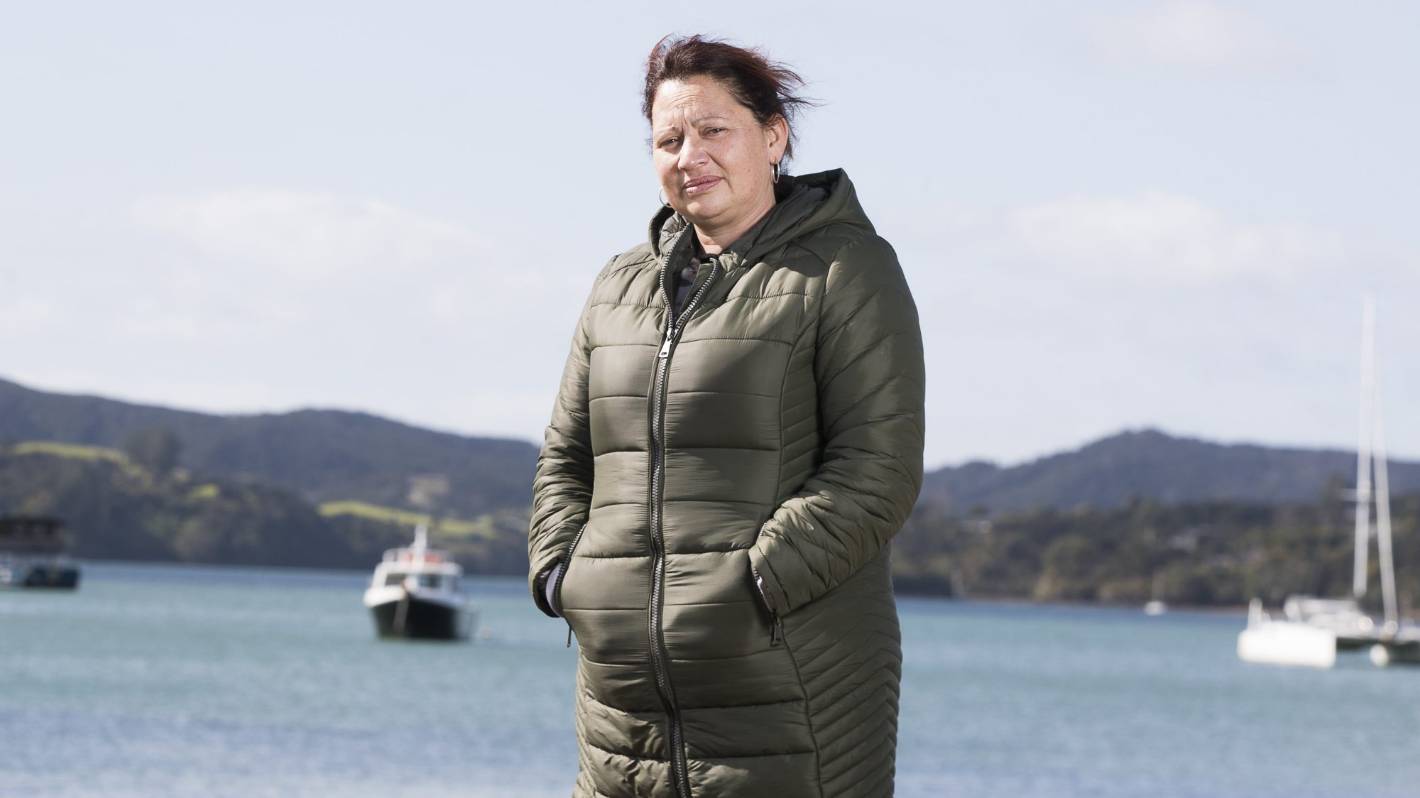RICKY WILSON/STUFF
Sheridan Waitai from Ngāti Kurī says the death of the three whales is devastating, especially after one died by ingesting plastic. (File photo)
Three sperm whales that died at Te Oneroa a Tōhe/Ninety Mile Beach are being mourned by the iwi trying to protect them.
The whales were first spotted around midday on Thursday, but one juvenile was dead before Department of Conservation workers arrived.
The other two whales, which were more than 10m in length, later died.
Sheridan Waitai from Ngāti Kurī said the deaths – of two older females and a young bull – were very sad.
“It’s a really devastating blow – we’ve lost two ocean mothers … It’s like losing a whole line of continuity,” she said.
An autopsy showed the bull had died after trying to digest a large amount of plastic, which got stuck between his two stomachs.
AMOS CHAPPLE/SUPPLIED
Te Oneroa a Tōhe/Ninety Mile Beach is one of the key points at the start of Te Araroa Trail. Walkers need to wear shoes in the rāhui area, Waitai says. (File photo)
“He would’ve been struggling for quite some time; it’s absolutely awful.”
Waitai said those especially devastated by the deaths are Ngāti Kurī young leaders of a project called 4th Gen, which works to restore taonga like whales and native trees.
“They have been doing quite a lot of whale monitoring and regeneration projects. They’ve led most of this work with the whales and they are absolutely devastated.”
Ngāti Kurī will be comparing genetic samples from the dead whales with its existing genetic records, to see which whānau has been lost, she said.
“We’ve got significant research in the whale space. We do a lot of that because they are really key indicators of climate change.”
Waitai to help honour and give a second life to the dead whales, their resources are being harvested for traditional practices.
The flensing and harvesting is expected to be finished on Tuesday.
Parts of the whale are used for rongoā (traditional Māori medicine), lashing on waka and other bindings. The bone is buried to be cleansed, then used in carving, Waitai explained.
“They are spoken about as if they are family and their names are remembered.”
CHRISTEL YARDLEY/STUFF
Since a dead sperm whale was found on a Coromandel beach, it has been towed to a new site and iwi have begun stripping its carcass. Video first published October 26 2022.
Some of the whale oil and whale bone is also used to protect against kauri dieback, with Ngāti Kurī having the northernmost kauri and one of the country’s oldest kauri forests, Waitia said.
“At this point in time we don’t have kauri dieback and we’re pretty much the only ones in the country that don’t – we take it very, very seriously.
“We rely on the support of the public to do what’s right.”
Ngāti Kuri has placed a rāhui on Te Onerao a Tōhe, banning the gathering of shellfish from Te Paki Stream to Matapia, until October 27.
Waitai explained the rāhui was important for the safety of people, as toxins from the dead whales had impacted the area.
She said beachwalkers – particularly those walking Te Araroa Trail – need to wear shoes and cover up any cuts or sores when walking through the area.
“We’d hate for anyone to get infected … It’s just to give the beach enough time to heal and be safe.”



